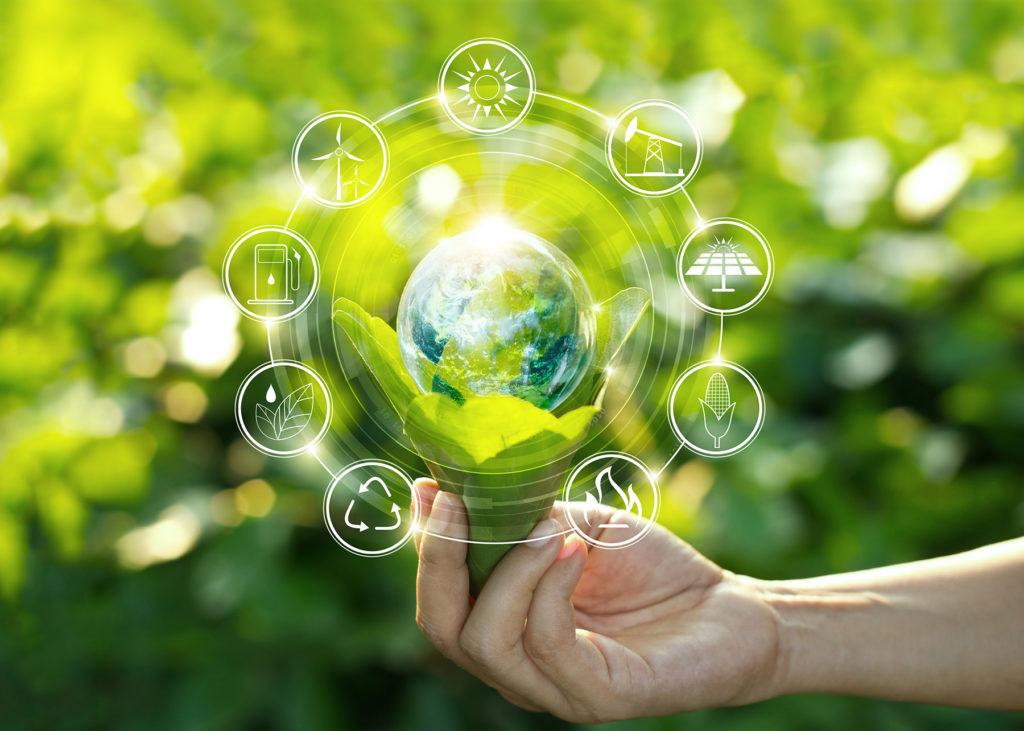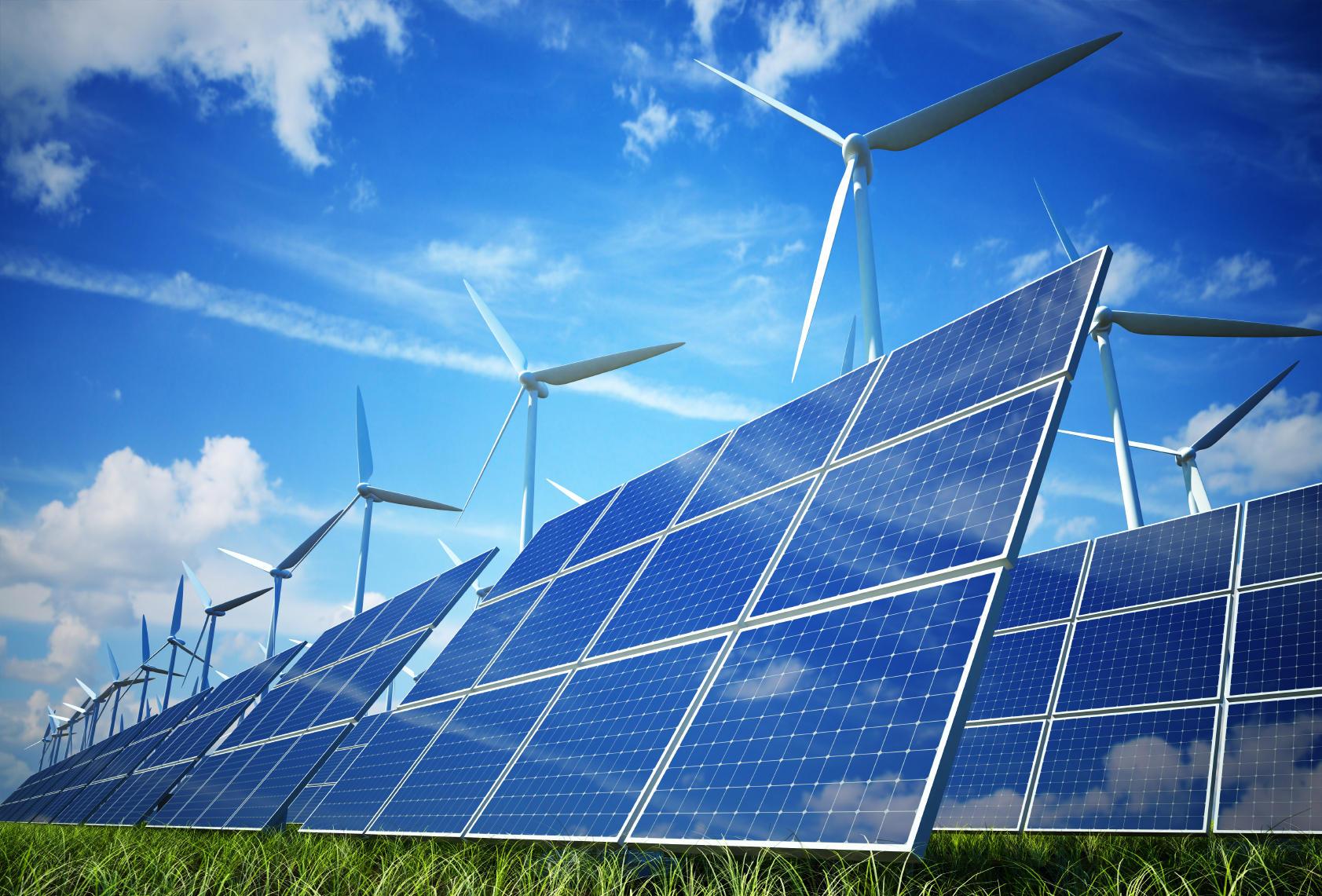EU's green initiatives and Azerbaijan's Karabakh region Review by Caliber.Az
In addition to the traditional energy and transport interaction, Azerbaijan and the European Union have recently formed new vectors of cooperation in the field of "green" economy and energy, including long-term projects in the Karabakh region. It's been about a month since the signing of a loan agreement with the European Bank for Reconstruction and Development (EBRD) to introduce the basic elements of the "Green Cities" program in Ganja. And now the local EBRD office has announced the prospects of using renewable energy sources (RES), as well as the introduction of other components of the "Green Cities" program, the implementation of which is possible in the liberated territories of Azerbaijan as well.
The initiative implemented by the European Union in recent years provides for the formation of environmentally sustainable, energy-efficient urban infrastructure, safe disposal of solid waste, with the presence of renewable energy elements and a high level of implementation of "smart" technologies. It covers all new regions of the world, including the former Soviet Union. Given the fact that cities account for more than three-quarters of global emissions and their important economic role, the vector of EU efforts is aimed at ensuring environmental reforms of urban infrastructure that provide the most rapid and effective impact of measures to combat climate change.

A "green city" is a settlement with high environmental indicators exceeding the average by such criteria as quality characteristics of clean air, water, soil and biodiversity, and modern infrastructure, which implies efficient and economical use of energy resources, including the presence of RES components and energy efficiency systems of buildings (heating, cooling). The most important element of a "green city" is the presence of a modern system of garbage collection and solid waste management through the creation of landfills/plants for their disposal, as well as the orientation of urban industry to the introduction of waste-free, environmentally friendly production, when the entire volume of raw materials and by-products is used in recycling. As a rule, "green cities" have intelligent systems of lighting, video surveillance, and telemetry, as well as the introduction of Internet of Things (IoT) systems in public facilities and residential buildings. The greatest challenge in developing and implementing the concept of a "green city" is to introduce technologies that mitigate the risks of carbon pollution and energy loss while increasing economic and social co-benefits, maintaining the financial sustainability of such a system, and maximizing commercial participation in it. This is especially true in developing countries, where environmental projects are often costly, and it is not always possible for city governments to keep them funded at the necessary level due to a lack of commercially viable solutions.
One way or another, the Green Cities initiative launched in the EU today involves a number of localities far beyond the borders of the Old World, including in post-Soviet countries. The international promotion of the initiative, as well as the financing and technical control aspects of the Green Cities program, are the responsibility of the European Bank for Reconstruction and Development. As part of its new global strategy to decarbonize and phase-out fossil fuels and the anticipated energy transition by 2030 and the subsequent dominance of the "green economy," the EBRD has increased lending to green causes to 40% of its total annual financing. In particular, the EBRD plans to allocate 5 billion euros for this program, which currently covers 56 cities around the world.
Each city that joins the EBRD's Green Cities Programme (GCAP) prepares its Action Plan aimed at increasing environmental sustainability in the context of climate change, improving municipal infrastructure in line with its unique needs, and then joins the EBRD's Action Plan to finance an incentive investment project for new participants in the program.

One of such new participants in the EU global "green" initiative recently became the second most populous Azerbaijani city of Ganja, where a loan agreement was signed on May 12, providing the Executive Authority of the city with a 10 million euro loan to implement a project to upgrade solid waste collection infrastructure (waste collection, street cleaning) in Ganja and improve the operational and financial efficiency of Ganja Housing and Communal Services. It's noteworthy that another financial tranche of EBRD in the near future for 12.5 million euros (10 million as a loan and 2.5 million as a grant) will be directed to improve the system of street lighting in Ganja. The project includes the introduction of energy-saving light sources, automated control and monitoring systems for lighting, replacement of poles, and power cables, which will provide significant energy savings, reduce maintenance costs of networks and improve safety for road users.
But Ganja is far not the only Azerbaijani city that will participate in the environmental initiatives of the European Union and its main financial structure. According to the information published by the EBRD in Azerbaijan, the program "Green Cities" can be continued in the Karabakh region, as the revival of settlements there. In general, the EBRD believes that Azerbaijan has significant potential to lead the transition to a green economy, as the government appreciates the potential of renewable energy sources and the importance of building sustainable infrastructure. Accordingly, the EBRD country strategy for Azerbaijan for 2019-2024 provides ample opportunities for financing energy efficiency projects and the development of renewable energy generation capacity and judging from the latest data, the area of the EBRD covers the exempted territories. In particular, the EBRD agrees with the initial data of the Ministry of Energy of Azerbaijan regarding the potential of alternative energy in the Karabakh region: it is estimated at about 3000-4000 MW of solar energy and 300-500 MW of wind energy. These figures indicate the possibility of bringing the Karabakh region over time to full energy independence, giving impetus to the development of the renewable energy sector throughout the republic.
It should be noted here that the EBRD is not the only international donor agency ready to invest in "green" economy and energy projects in the liberated territories of Azerbaijan. The prospects for the development of "green" initiatives were examined last March during the visit of the UN, World Bank (WB), and EU experts mission to the country, who evaluated the needs for rehabilitation and reconstruction in the liberated territories of Azerbaijan based on the World Recovery and Development Assessment (RPBA) methodology. During the visit, the mission visited the liberated territories in the Aghdam, Fuzuli, and Jabrayil districts. In February this year, the EU and the WB signed an Administrative Agreement on the Instrument for Operational Technical Assistance (AZTAF) with the allocation of grant support to the Azerbaijani government with a total budget of 5.25 million euros. Among other things, the program includes components for the development of green energy in the Karabakh region.

It is noteworthy that the development of alternative energy and "green" production in Karabakh has been seriously promoted by commercial structures. Thus, negotiations are held with European, Arab, and Turkish companies, which are interested in participating in the construction of wind and solar power plants in the Karabakh and East-Zangazur economic regions. European business can also be attracted to the modernization projects of small hydroelectric power stations and the construction of new hydroelectric power stations on mountain rivers of the Lesser Caucasus. In general, according to the data of the recent poll carried out by EU experts, about 54% of the respondents - EU companies are interested in taking part in the projects in the regions liberated from the occupation and about 14% of them have already launched some activity in this direction. Companies from Great Britain and Eastern European countries, including Hungary, Serbia, Slovakia, and Croatia are very active in this regard.
The Ministry of Climate and Environment of Poland has recently come up with its initiative in this area and is studying the possibility of organizing a trade mission to Azerbaijan as part of its GreenEvo (Green Technology Accelerator) program. The GreenEvo innovative program is competitive in terms of price and efficiency and is aimed at creating favourable conditions conducive to the introduction of environmental technologies, including solving problems of drinking water and wastewater management, safe waste disposal, and the introduction of renewable energy systems and energy conservation. Poland expects that a trade mission and presentation of GreenEvo mechanisms will be organized within the framework of the eighth meeting of the Polish-Azerbaijani intergovernmental commission on economic cooperation, which is scheduled for this year.








